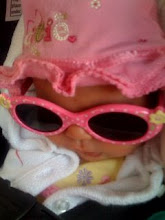Since the water parameters have been looking good, we decided it was time to stock more than snails and hermits. I had placed a small colony of Caribbean Zoanthids in the tank, and they were doing well after several days so this seemed to be a good "bioindicator" that the conditions were stable (these Zoanthids seem to close up consistently when the conditions are not.)
I went by the local fish store (LFS) and picked up a couple of "buy one get one free" coral frags. I specifically purchased frags that were un-mounted. The cement frag mounts are useful to propagators for mounting specimens into egg crate, but in my experience are both difficult to epoxy onto rocks and also don't look very natural.
Acropora spp. (staghorn form) "Starry Night" (similar to
Acropora cerviconis, one of my long time diving favorites.) It may seem that the coral should be mounted base down, but it will actually grow faster by affixing it flat so as to "reverse" its growth patterns so that the former radial (slower) growth patterns will become multiple axial growth patterns as it encrusts onto the rock and reorients itself as such. This makes sense when you consider that these corals reproduce extensively by growing new colonies from fragments broken off by storms, etc. [ref: Eric Borneman
lecture] Hopefully I will be posting growth pics! (You can see the aforementioned Zoanthids in the background.)

Encrusting
Montipora coral. Not sure of the species, but it may be a
nodosa.

Soft "Colt" Coral. Not sure yet of the genus- probably either
Capnella or
Cladiella. This was growing "wild" on the glass of the coral tank at the store, and the reddish patterns weren't similar to any of the larger colonies that I saw at the time.
 Monitpora capricornis
Monitpora capricornis (at last I can make a definite ID!) This coral is extremely common in the hobby, and reasonably hardy and fast-growing. Same color morph that Payton gave us last year. The frag is a really good size, and is mounted for best viewing from our computer desk. :-) It is a really bright orange under the aquarium lighting.

I tested the water again and was surprised to find that there were trace levels of nitrites. I dosed some Seachem Pure and made up some water for a water change tonight... The other parameters look OK for now.

























.jpg)
